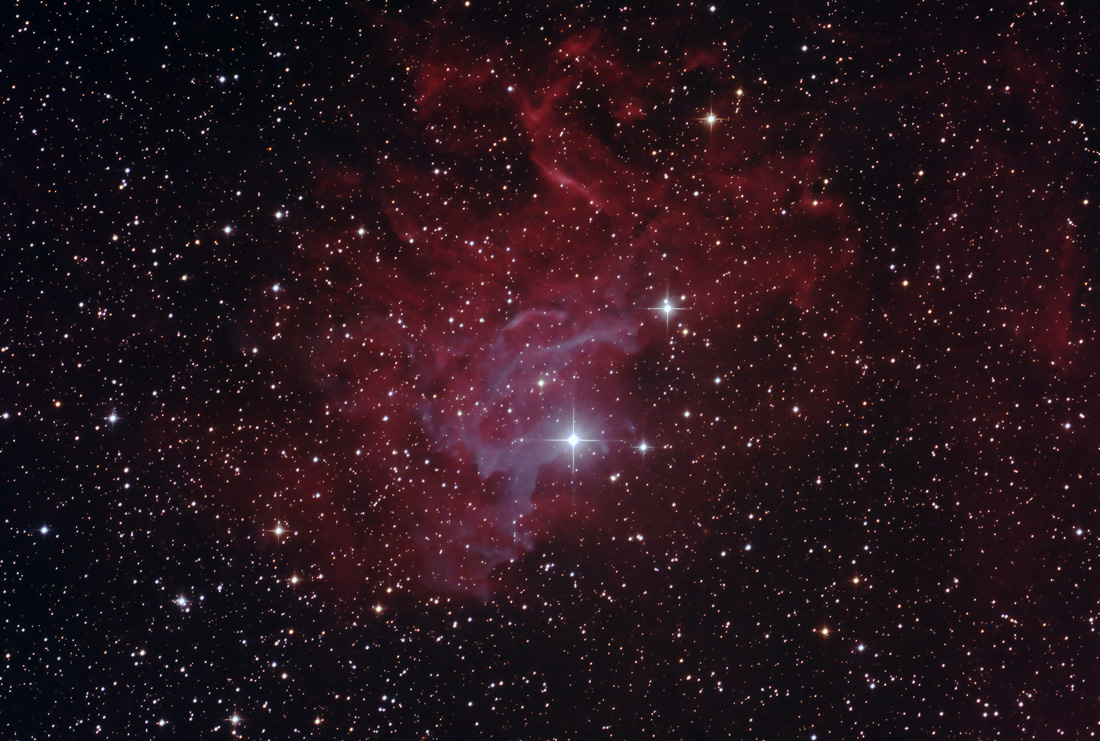 |
IC405 - The Flaming Star Nebula in Auriga
 |
Copyright 2008 Hap Griffin
Described by astronomer Max Wolf in 1903 as "a burning body from which several enormous curved flames seem to break out like prominences", the Flaming Star Nebula is aptly named. The IC 405 complex is lit nearly entirely from the ionizing radiation of the star AE Aurigae, shown in the center of this image. AE Aurigae has an interesting origin and history. Some 2.5 million years ago, the star was thrown out of a multiple star system that resided in the constellation of Orion. The double star Iota Orionis was left behind and two "runaway stars", one of them AE Aurigae, headed in different directions at 200 km per second leaving bow shocks in the gases behind them betraying their paths through the galaxy. The star is now just sweeping by in front of the IC-405 complex like the light of a passing train, illuminating what would otherwise be a much dimmer object.
The Flaming Star
Nebula lies
at a distance of 1500 light years.
Date/Location:
November 25, 2007 Griffin/Hunter II Observatory Bethune, SC
Instrument: Canon 40D (modified IR filtering) Digital SLR through
10" Newtonian w/MPCC
Focal Ratio: f/ 4.7
Guiding: SBIG ST-402 through Takahashi FS-102
Conditions: Clear and cold
Weather: 32 F
Exposure: 153 minutes total (51 x 3 minutes @ ISO 800)
Filters: Baader UV/IR block internal to camera
Processing: Focused and captured, RAW to TIFF conversion,
flat and dark frame calibration, auto alignment, Digital Development, resizing and JPEG conversion in ImagesPlus.
Final tweaking in Photoshop
CS2.